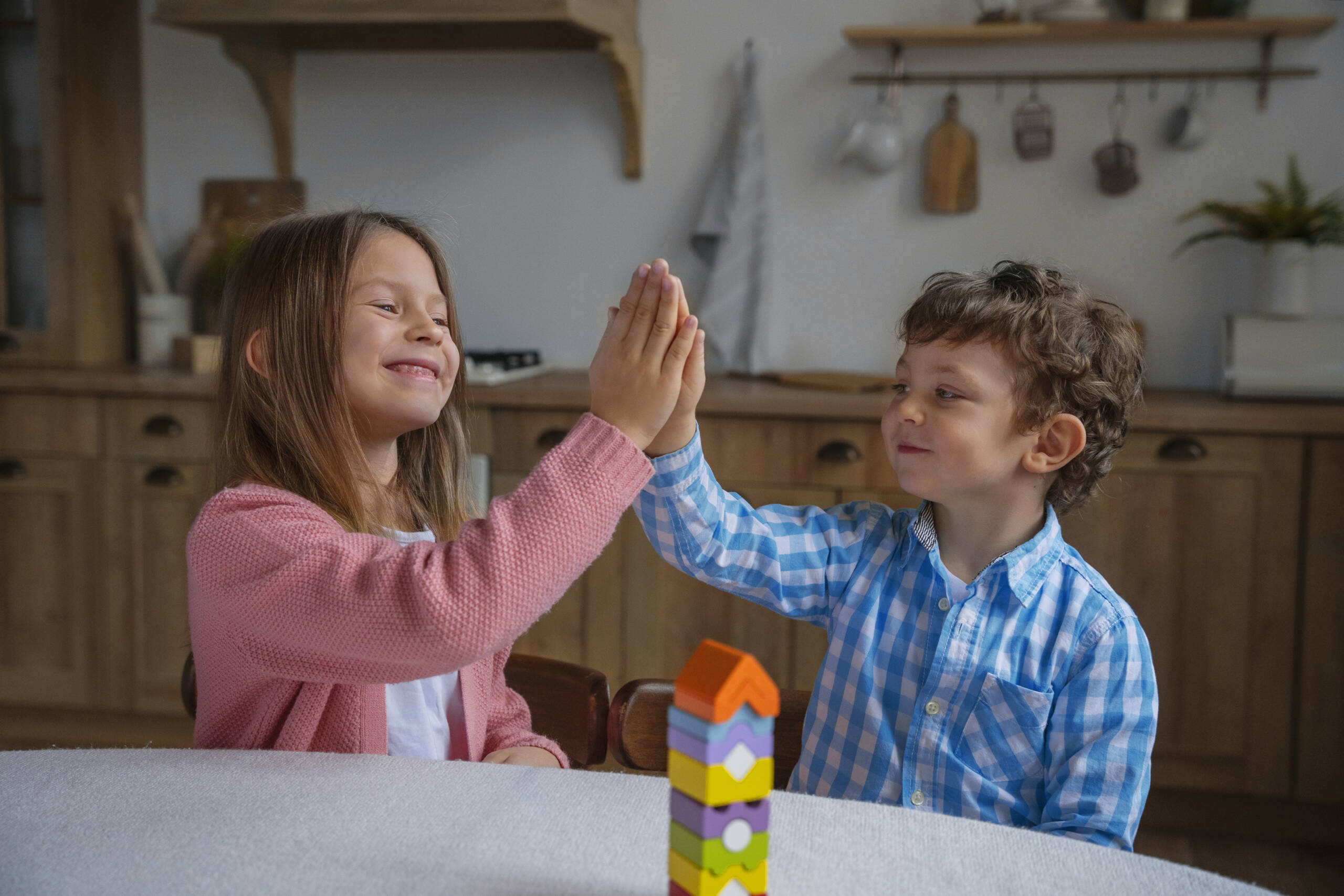“Can I skip piano class today? Tara and Anya were mean to me yesterday.”
“Krisha is not my best friend anymore.”
“Arnav said that I am crazy.”
For a parent, it is heartbreaking to hear such statements from their children. Friendships are an important part of childhood as they teach social skills to kids. Ironically, they aren’t always easy to manage. There are all types of misunderstandings. Sometimes jealousy and peer pressure, too. As parents, we can help them manage these difficult feelings. We can help them cope with the complexities of friendships and grow from their experiences.
Here are some tips for guiding your child through the most common friendship challenges.
Teaching Social Cues
You can begin by explaining to your child the importance of Social cues. Social cues are the subtle signs people give through body language, tone, facial expressions, and words. They are crucial for navigating friendships or any type of relationship. But remember, reading social cues does not come automatically to every child. Some kids, especially those who are shy, highly sensitive, or neurodivergent, often need extra support.
How to Teach Social Cues:
1. Name the Cues
Kids are naturally curious, and reading the “invisible signals” people send can feel like trying to understand a secret language. You can help decode these little signs and turn them into a fun game.Explain to your child what different cues mean.
Use these examples: When Kiara looks away or crosses her arms, she might be feeling uncomfortable. When Mia leans in, smiles, and makes eye contact, she is probably interested in what you’re saying.
2. Use Media
Some of the best learning happens when you are just hanging out. It can be while watching a movie or while flipping through a picture book. The idea is simple: use what you’re already doing together to talk about feelings and reactions. No heavy lectures, just curious little moments of connection.
While watching a TV show or movie, you can gently pause at an emotional scene and ask: “How do you think she’s feeling right now?”
Or during a storybook, point to a character and ask: “What would you do if you were him?”
3. Encourage Observation
When out in public, ask your child to spot different emotions by watching people’s faces and body language. You can also make a game out of it.
Social Interactions with Scripts
When kids struggle with friendships, they often don’t know what to say. Giving them simple scripts they can practice helps them feel more confident and prepared.
Here are some examples you can ask your child to use:
When Making New Friends
- “Hi! Can I join your game?”
- “I like your [toy/shirt/book]. Want to play together?”
When Setting Boundaries
- “I don’t like it when you call me that. Please stop.”
- “I need some space right now. I’ll come back later.”
When Handling Disagreements
- “I feel upset when you leave me out. Can we figure this out?”
- “I see it differently. Can we talk about it?”
When Dealing with Bullying
- “That’s not okay. I’m going to walk away now.”
When Facing Peer Pressure
- “No thanks, I’m not comfortable with that.”
- “I don’t want to get into trouble. Let’s do something else.”
Addressing Common Friendship Struggles
1. Bullying
Bullying can leave a deep mark on a child’s heart. It can shake their confidence, make them doubt themselves, and even cause them to lose trust in others. When bullying happens, your response to it matters a lot.
Bullies often feed off a big reaction like anger, tears, or fear. Teaching your child simple, strong responses can help them protect their dignity without escalating things.
Short, firm statements work best, like:
- “Stop it.”
- “That’s not true.”
- “I don’t believe you.”
You can teach your child:
“You don’t have to get into a big fight. You just have to show them you’re not an easy target.”
If bullying doesn’t stop or if it gets physical, threatening, or scary, don’t hesitate to step in. Talk to teachers, counsellors, or the principal.
2. Peer Pressure
Kids naturally want to fit in, making them vulnerable to peer pressure. It’s a natural, beautiful part of growing up, making friends, feeling part of a group, and finding their place. But sometimes, that deep need to fit in can make even the most confident kids feel unsure of themselves.
Teaching kids to stay true to themselves even when it’s hard is one of the most important life skills we can give them.
Bring up situations they might face and ask:
“What would you do if your friend dared you to break a rule?”
“How would you feel if everyone else was doing something you knew wasn’t right?”
Let them talk. Even if their answers aren’t perfect, you’re planting seeds. You can also share stories from your own life. Kids love knowing that we get it, thatwe’ve been there too.
3. Exclusion and “Best Friend” Dynamics:
Friendships in childhood can feel like the whole world. One day, they’re inseparable. The next day, they’re on the outside looking in. And when your child comes home feeling left out, it can break your heart just as much as theirs. It’s important to remember and remind them that friendships are a journey, full of twists, turns, and a lot of learning. Instead of getting stuck chasing one friendship that isn’t working, gently nudge your child to explore new connections. Help them see that their world is bigger than one friend or one group.
It’s so easy for kids to measure their worth by how many friends they have, or who they’re “besties” with. But you can help shift the focus. Praise them for being inclusive, being kind, and being thoughtful.
Building Emotional Intelligence Day by Day
Building emotional intelligence is a lifelong conversation. Some days, your child will amaze you with their insight and empathy; other days, they’ll need a lot of hand-holding. That’s completely normal.
Here are a few daily habits that can make a big difference:
- Talk openly about your feelings and how you manage them.
- When your child feels upset, help them label their emotion and brainstorm positive coping strategies.
- When your child handles a difficult situation well, acknowledge it: “I’m proud of how you stood up for yourself today.”
Friendships are where some of life’s most important lessons begin. Through the ups and downs, the laughter, the misunderstandings, the heartbreaks. Children are learning how to connect, trust, set boundaries, and stay true to themselves.
By teaching emotional intelligence in small, everyday ways, you are giving your child tools for life. Tools that will help them navigate future workplaces, partnerships, and communities with grace, courage, and empathy.



